THE TWO KREMLINS OF MOSCOW
- abroadandbeyond
- Aug 1, 2017
- 6 min read

To many tourists visiting Russia the word "kremlin" is only associated with the Moscow Kremlin and Red Square, but few foreigners have heard of other Russian cities that were built around fortresses also knows as kremlins. Even fewer know that there are two kremlins in Moscow, the other one being a colourful cultural centre imitating Old Russia.
But first, let's get clear what a kremlin actually is. The original word (Russian: кремль) stands for a medieval citadel built in the centre of the settlement, usually by a river, enclosed within wooden - later stone or brick - walls with towers, ramparts, and battlements. The lack of mountains or other natural barriers on the open flatlands in Central European Russia meant that cities needed those high walls to repel invaders and maintain security. The strongholds generally housed cathedrals and churches, palaces for bishops, governmental buildings, and markets, so they would eventually turn into religious, administrative, and trading centres of nearby lands.
Apart from Moscow, a few other capitals of principalities such as Yaroslavl, Novgorod, Nizhny Novgorod, Smolensk, Rostov, Pskov, Vladimir, developed around old kremlins. In fact, there were over 400 kremlins in Russia before the 13th-century Mongol raid. While key fortresses would have stone gatehouses and walls, most were earth ramparts fortified with wooden walls that were easy to burn down. Following the invasion, new fortresses were all stone-built.
By the 16th century, grand kremlins gave place to small fortress chains. Two centuries later, they were replaced with bastions, which led to some of the kremlins being torn down and used for construction materials. There is a number of kremlins still standing today in varying degrees of preservation - some are almost intact, whereas others have been destroyed completely and only have the earthen mounds and some of the buildings inside survive. Most of the preserved fortresses have been converted into museums and are open to general public.
THE MOSCOW KREMLIN
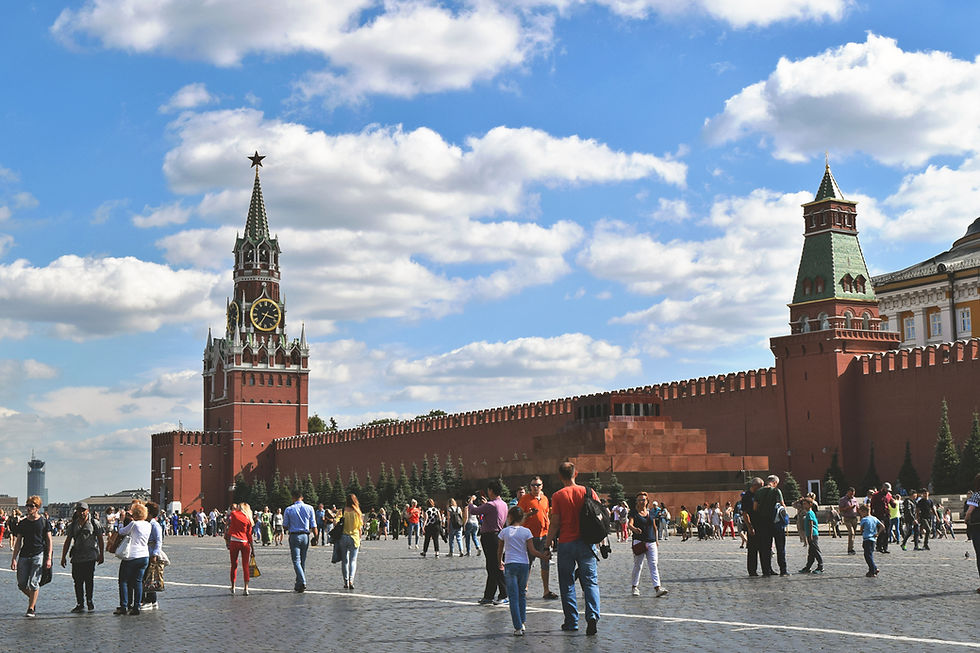
Located in the very heart of the Russian capital, the Moscow Kremlin is one of the most recognised sites of the city and the country altogether. Today it functions as the official seat of the president and is a byword for the Russian government, so it is often referred to as just 'The Kremlin'.
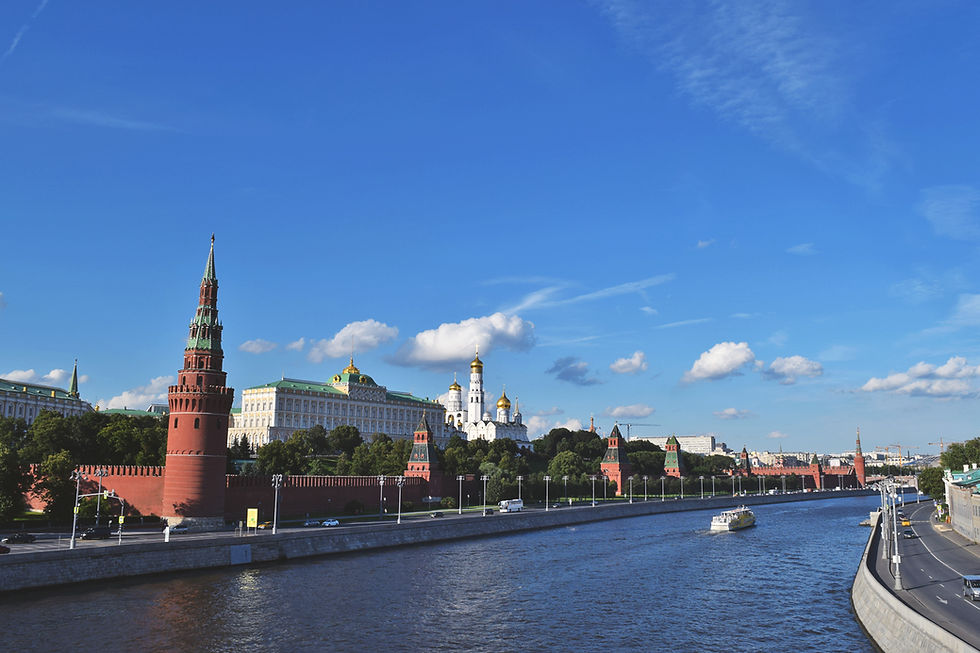
The Kremlin is surrounded by a 2.24 km (1.39 mi) long red wall encircling an area of 275,000 m2 (about 70 acres) along the River Moskva, the Alexandrovsky Garden, and Red Square. It sounds like a big place, but it is even bigger when you are there! Inside are quite a few restored governmental offices, several churches, a palace complex, the Tsar Bell and the Tsar Cannon, and three stunning cathedrals - the Annunciation Cathedral, the Archangel Michael Cathedral, and the Dormition Cathedral. The Kremlin and all but two buildings inside have been in the UNESCO World Heritage List since 1990.
Paintings of the Kremlin as it would look in the early 14th century and at the end of the 17th century, respectively, by Apollinary M. Vasnetsov (1853 - 1933). Source
Like many Russian places of exterior grandeur and splendour, the citadel has a rather turbulent past. Its construction was a matter of national importance: Moscow claimed primacy among the Russian principalities by 1326, despite the Mongols destroying the city just a hundred years prior. The first stone version was built between 1366 and 1368 and enclosed the entire city in its six-metre-high walls, from warehouses to people's homes. The walls were soon tested by the Lithuanian Grand Duke Algridas, who failed, and the Tatars, who could not take for the fortress but managed to trick the Muscovites into opening one of the six gates. Not surprisingly, the Kremlin was burned down - just to be completely restored within a few years' time!
The restored walls withstood two long sieges in the 15th century but started deteriorating. Grand Prince Ivan III ordered to replace the white stone walls with red brick ones and invited the best military architects from Italy to supervise the construction. Restored a great many times, these walls have since survived the Time of Troubles, the Moscow Uprising of 1682, and Napoleon's attempt to blow them up.
>> Not to miss while there: The symbol of Russia standing at the southern tip of Red Square - St Basil's Cathedral (pictured below) - is hard to miss but be sure to go inside as well.
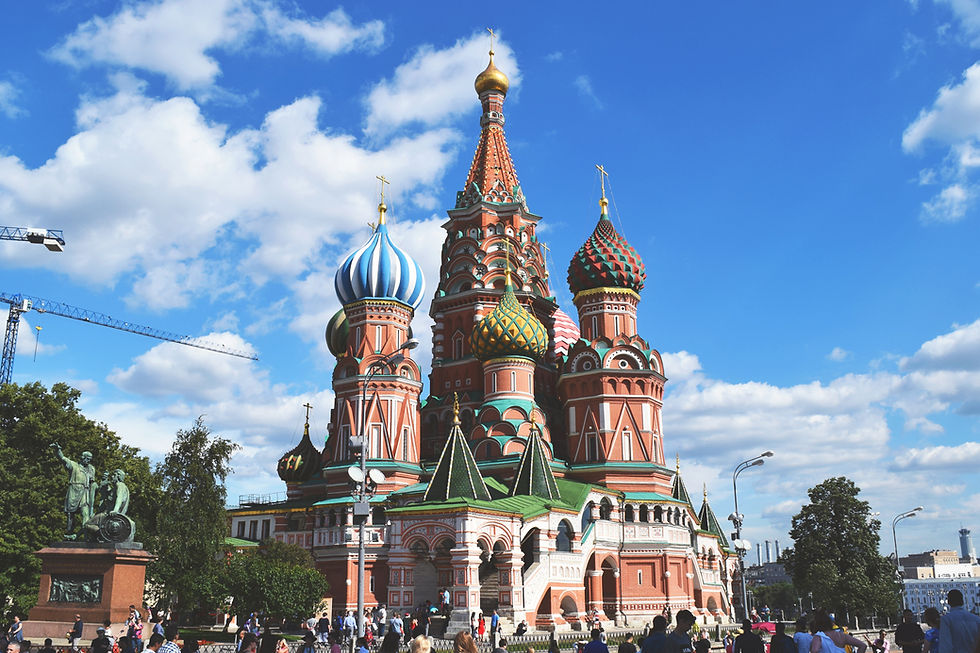
The cathedral, commissioned by Ivan the Terrible to commemorate the siege of Kazan and Astrakhan, was completed in 1561. The building is shaped as a bonfire flame burning into the sky originally represented by eight side churches around the central church of Intercession. Later on, the tenth chapel was erected over the grave of local saint Basil (Vasiliy). The design, with an impressive swirl of patterns, shapes, and colours, has no analogues in Russian architecture. How about the Church of the Savior on Spilled Blood in St Petersburg, you might ask? Well, the resemblance is no coincidence - it is a node of respect from the architects who were inspired by the Cathedral.
According to popular legend, Ivan had the architects blinded so that they could never recreate the masterpiece or build anything comparable. While researched have busted the myth, they still cannot confirm the identity of the architect. The official Russian cultural heritage register mentions the names "Barma and Postnik Yakovlev", but some academics believe that they both refer to the same person, Ivan Yakovlevich Barma from Pskov.
Confiscated from the Russian Orthodox Church during the infamous anti-religious regime in the Soviet Union, the cathedral was forcefully secularised and turned into a state museum. Today, it is open to general public 365 days a year, but you need to purchase a ticket to get inside. It is completely worth it, though, as you will get to see a maze of galleries connected by narrow passages. Each gallery showcases icons and ornate designs on the walls and - don't forget to look up - the ceiling. The intricate paintings reflect their era: here are 16th-century frescoes, 17th-century tempera painting, and 18th – 19th-century monumental oil painting.
Adult ticket is RUB500 (about €7 or $8.25), it can be purchased at the entrance or online (the payment page is available in Russian only, but Google Translate should do). Student ticket is RUB150, but beware that they only accept student cards from Russian universities or ISIC cards - in other words, a student card from a non-Russian school won't do (first-hand experience).
> How to get there: The Kremlin and Red Square are easily accessed by public transport - there are seven metro stations within a short walking distance.
THE IZMAYLOVO KREMLIN
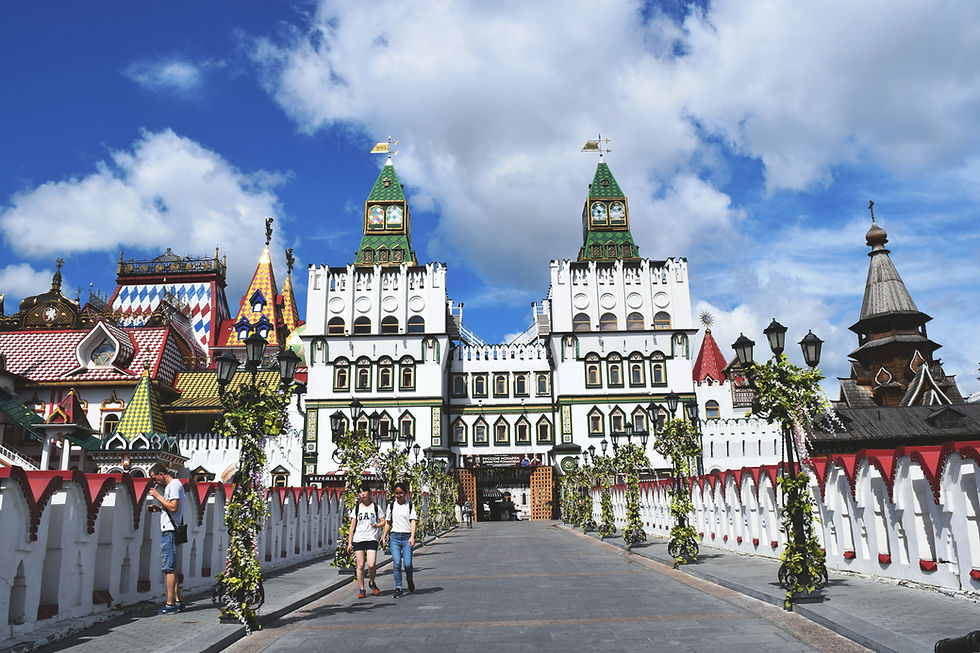
Moscow's other, lesser known kremlin is located near the Serebryano-Vinogradny Pond in the city’s Izmailovo District. However, this kremlin was not built for protection as the name suggests. Completed in 2007, it was designed as a culture and entertainment complex as well as marketplace loosely modelled after traditional Russian architecture in pre-Petrine times. Indeed, these wooden buildings resemble descriptions of Old Russia from a fairy tale.

Walking into this kremlin is like stepping back in time. If you pay close attention you will spot an emblem with a crowned griffin attached to buildings and fences - that is the coat of arms of the last Russian royal family, the Romanovs.
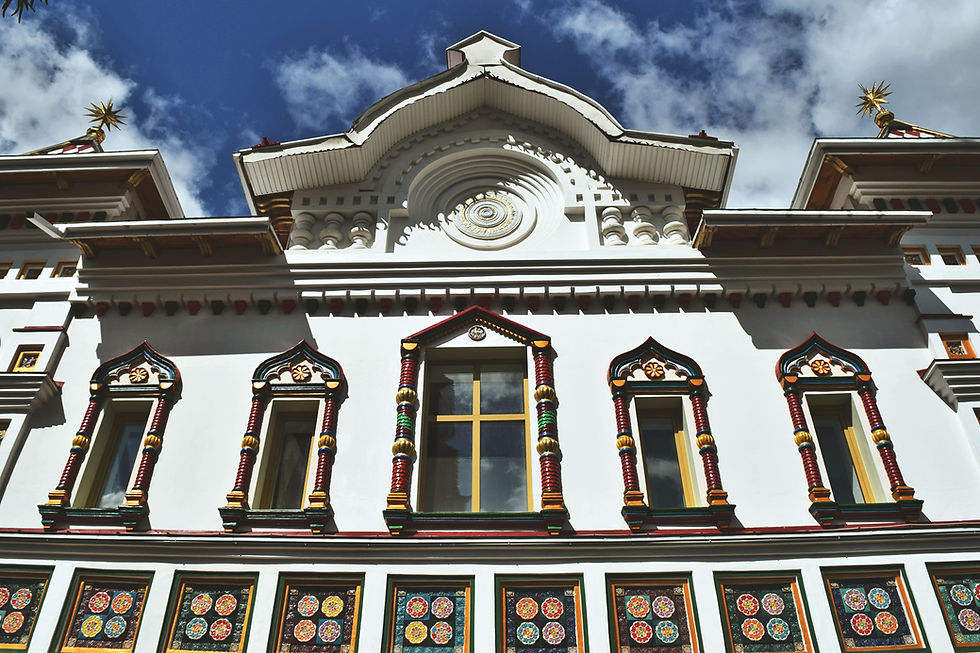
Today, the centre operates as an open-air museum and an amusement park for locals and tourists alike.
Don't be surprised if you see newlyweds walking around - the complex houses a registry office for civil weddings (picture on the left). Besides that, there are restaurants, taverns, and food stalls serving traditional dishes and drinks, a reconstruction of a wooden Russian church (picture on the right), workshops on crafts such as pottery and smithy, museums, and a variety of shops.
Admission is free.
>> Not to miss: The open-air flea market, connected to the kremlin by wooden bridge, re-creates trade rows of an old settlement. This site dates back to the the 17th century, when it was a trading place for wares, paintings, and crafts. The market space is a labyrinthine of walkways lined with roofed stalls, where you can find anything from Soviet memorabilia, fur hats, and matryoshka dolls to books, retro toys, paintings, and whatnot.
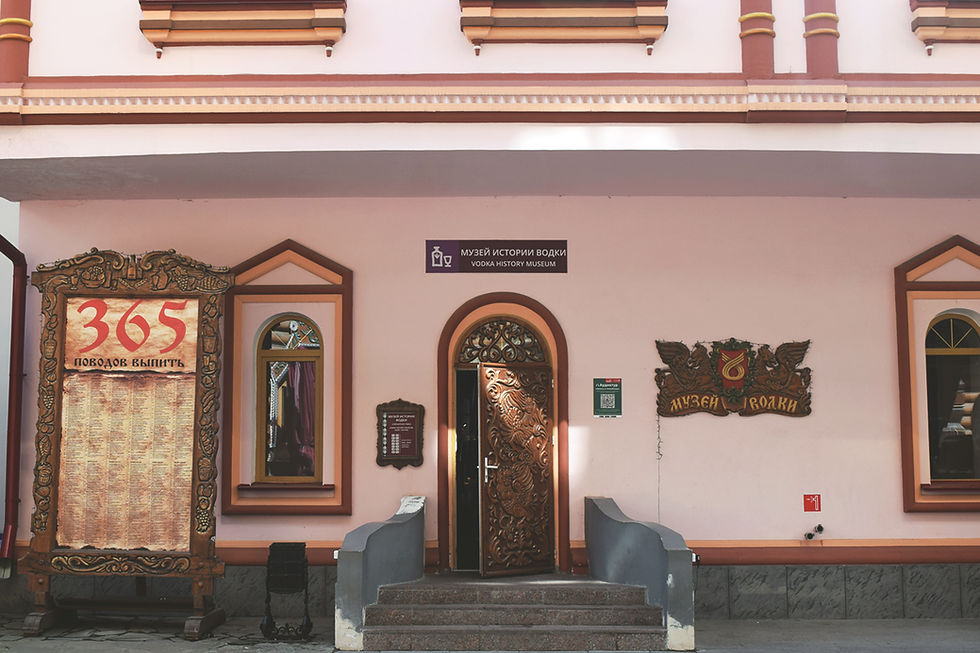
The Kremlin in Izmaylovo is a museum of museums. Here, you can find the Museum of Russian Costume and Life, the Museum of Misbehaved Children, the Museum of Bread, the Museum of Russian Toy, and, naturally, the Museum of History of Vodka (pictured above). The latter is just three rooms and a tavern where you can sample the spirit. Outside the museum is a poster enlisting 365 excuses to have a drink (for every day of the year), among which are unofficial holidays like St Valentine's Day and International Students' Day as well as Einstein's birthday, the discovery of Pluto, and the first premier of the Swan Lake ballet. Admission fee to the Vodka Museum is RUB300.
> How to get there: Take the metro to Partizanskaya (on the dark blue, or Arbatsko-Pokrovskaya, line). The Kremlin is a 10-minute walk from the station.
Travelling to Russia? Check out this blog post about the most beautiful stations of the Moscow Metro, learn why I love Saint Petersburg so much, educate yourself on some lesser-known habits and customs of Russian people, as well as find out why Russians look so damn gloomy all the time (and whether they are actually as depressed as they look).
Have you been to Moscow? Share in the comments below!
Happy travels x





































Comments